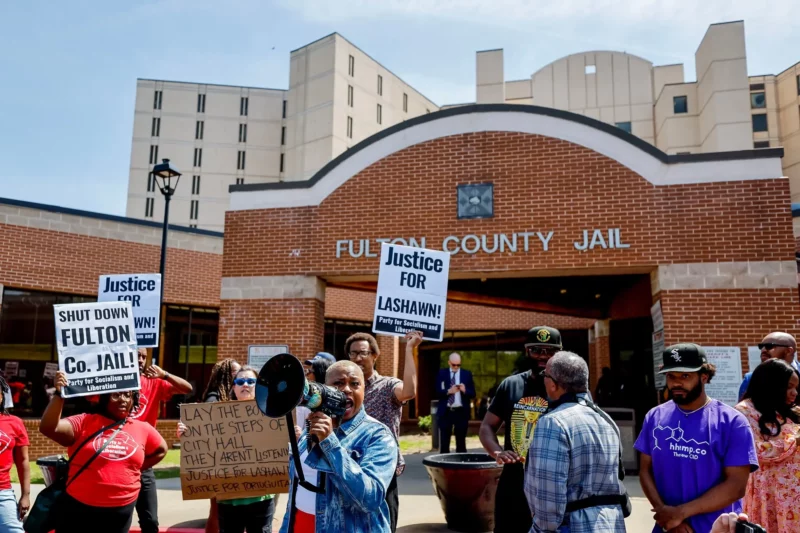Justice Dept. to Investigate Georgia Jail Where Inmate Died Covered in Lice
Share
Explore Our Galleries
Breaking News!
Today's news and culture by Black and other reporters in the Black and mainstream media.
Ways to Support ABHM?
Linda Qiu, The New York Times
The department also pointed to reports of violence and deteriorating surroundings at the jail in Atlanta, where inmates have fashioned weapons out of crumbling building materials.

The Justice Department said on Thursday that it was investigating the conditions at a jail in Fulton County, Ga., citing reports of violence, deteriorating surroundings and the death last year of an inmate who was covered in lice and feces.
The civil investigation, part of a broader effort by the department to scrutinize conditions at jails and prisons across the country, will also examine whether officers used excessive force, the availability of medical care and the treatment of mentally ill prisoners.
“Detention or incarceration in jail should not include exposure to unconstitutional living conditions that place lives in jeopardy or risk of serious harm from assaults,” Kristen Clarke, an assistant attorney general who leads the agency’s civil rights division, said in announcing the investigation. “Jail facilities must provide constitutional and humane conditions, in which all people can live safely while they go through the criminal process.”
[…]
Conditions at Fulton County Jail have been the subject of criticism for years. The jail was under federal supervision from 2006 to 2015 after a court found that the detention complex was overcrowded, understaffed and dangerous. Exceedingly cramped conditions in 2020 led an expert on infectious diseases to warn of a mass outbreak of the coronavirus at the jail unless it drastically reduced its population size.
In her announcement, Ms. Clarke said there was “significant justification” to open the inquiry, including acknowledgment from local law enforcement of the jail’s dilapidated state and a “deeply concerning” level of violence where the jail averaged more than one stabbing per day at one point last year. Inmates at the jail are often people of color, she added, saying that 87 percent were Black.
She also pointed to the death of an inmate, LaShawn Thompson, 35, in September. Mr. Thompson, who had been arrested on a battery charge, was kept in a filthy cell in the jail’s psychiatric ward and died after weeks of severe neglect, a private autopsy conducted on behalf of his family said.
The medical examiner found that Mr. Thompson was malnourished and dehydrated, had lost 32 pounds in less than 90 days, and had matted hair, dirty nails and “innumerable” insects all over his body. The examiner also wrote that Mr. Thompson, who had schizophrenia, had not received medication for his condition for over a month.
Read the rest of the article here.
Learn more about mass incarceration and its effects on the Black community in this virtual exhibit.
Find more Breaking News here.











Comments Are Welcome
Note: We moderate submissions in order to create a space for meaningful dialogue, a space where museum visitors – adults and youth –– can exchange informed, thoughtful, and relevant comments that add value to our exhibits.
Racial slurs, personal attacks, obscenity, profanity, and SHOUTING do not meet the above standard. Such comments are posted in the exhibit Hateful Speech. Commercial promotions, impersonations, and incoherent comments likewise fail to meet our goals, so will not be posted. Submissions longer than 120 words will be shortened.
See our full Comments Policy here.